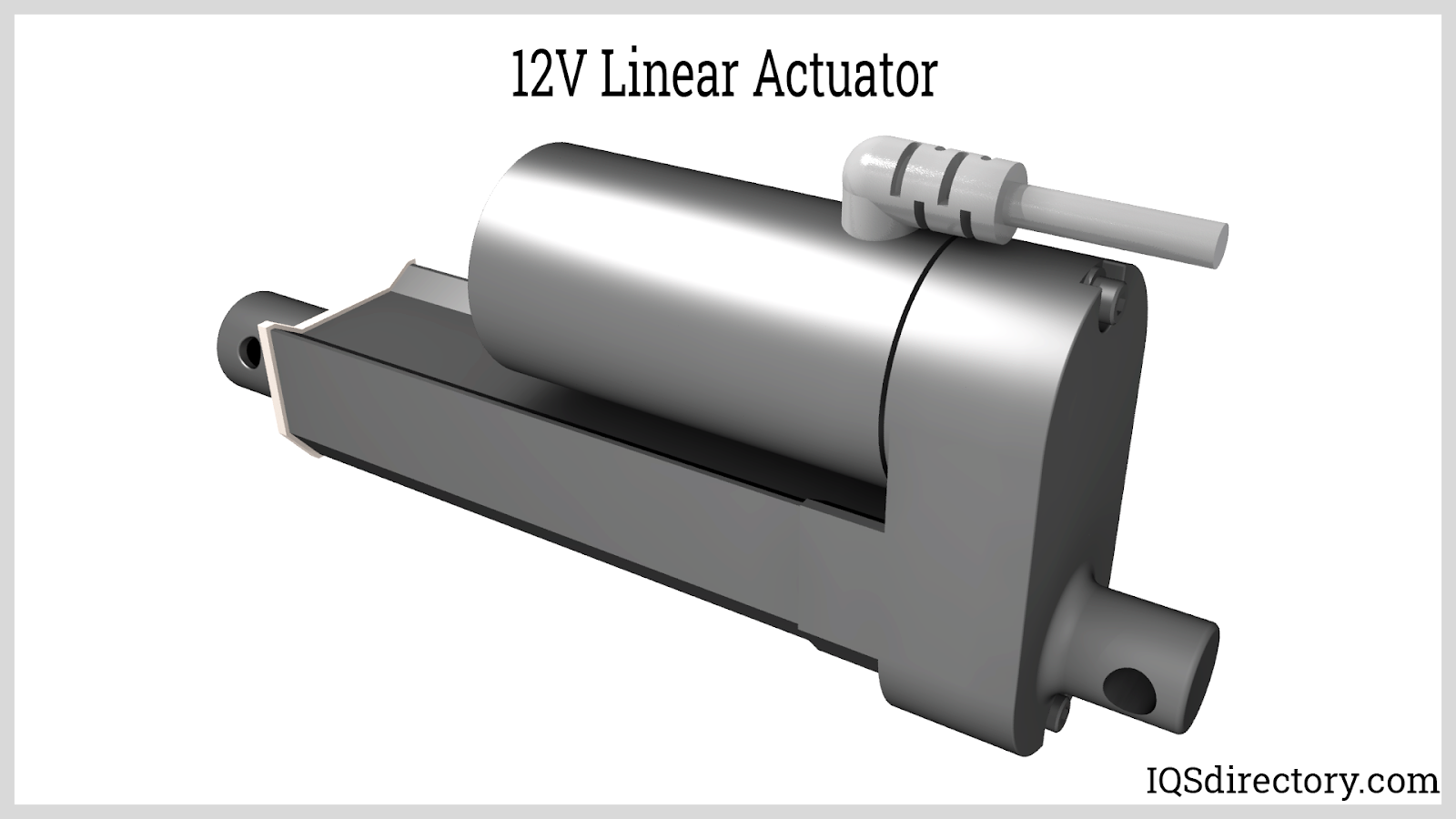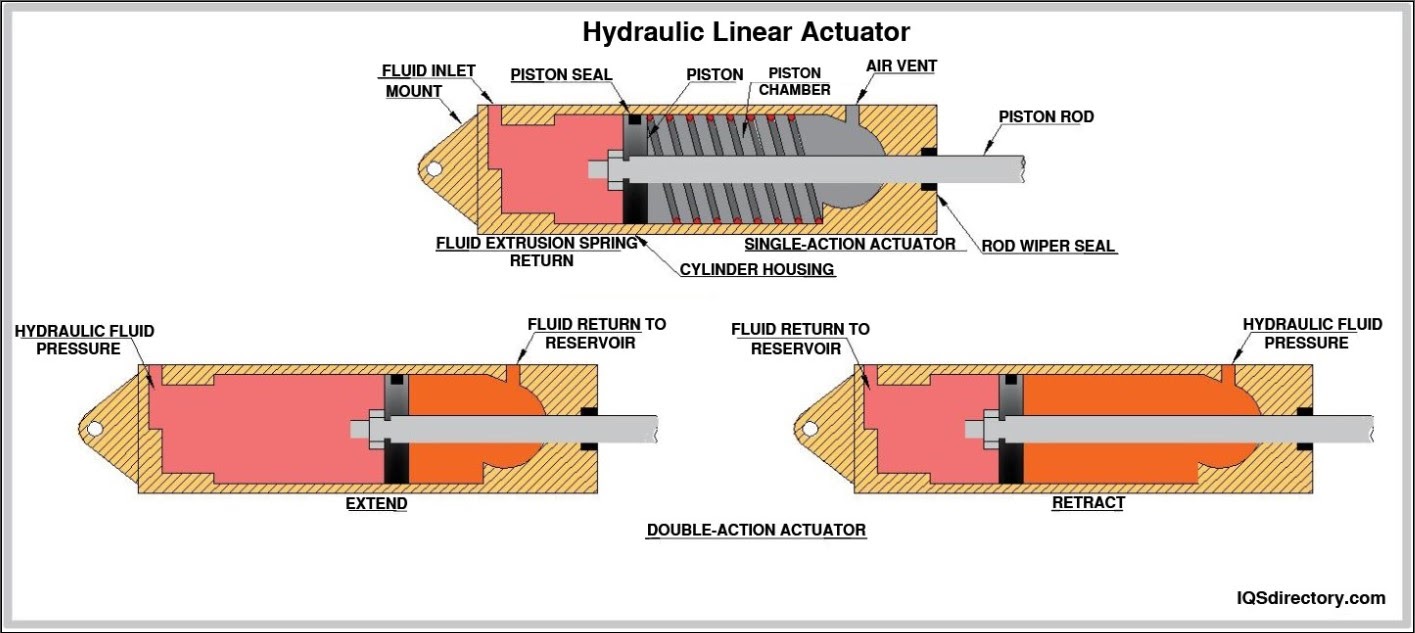They require limited space and simple mountings and can produce high instant torque in either direction. Rotary actuators are used for lifting, lowering, opening, closing, indexing, and transferring movements. Read More…
Del-Tron Precision, Inc. was founded in order to serve the needs of automated equipment manufacturers for innovative, high quality and reasonably priced anti-friction linear bearings and associated products such as valve actuators.

At IAI America, we are dedicated to providing value and originality with any product that we provide to you. Our linear actuator model types include slider, folded-motor slider, rod, and single, double, or ball-bushing type guided rod actuators. Our staff members are committed to being available in order to bring you full customer satisfaction while delivering the products that will best suit...

Our linear actuators deliver exceptional quality and performance under $120 USD. Whether you're prototyping, launching a startup, or developing products for medical, automotive, robotics, or other applications, we help you save time and cost. We also offer custom actuator solutions for specific requirements. Our new L8 series brings enhanced performance to compact applications, and every actuator ...

ElectroCraft hybrid stepper-based linear actuator solutions provide original equipment manufacturers the precision, performance and reliability that is required for a wide variety of motion control positioning applications. From medical and laboratory equipment to industrial machinery, ElectroCraft offers configurable or completely customizable solutions in three unique product designs: linear...

Isotech provides a number of different linear actuator & lifting columns for various applications. These products can be customized to meet your specific load requirements and travel distances. You can trust the accuracy of these solutions and the experts at Isotech is always available to assist you with your needs. Feel free to contact them today to learn more information!

Tusk Direct’s specialty is linear motion components. We offer slides, bearings, lubricants and assemblies compatible with pneumatic or electric actuators and actuator systems.

More Rotary Actuator Manufacturers
The various forms of energy that run rotary actuators include hydraulic, pneumatic, and electrical. Hydraulic rotary actuators are often used for steering or as an alternative to hydraulic cylinders or motors.
Pneumatic rotary actuators are commonly used for material handling, product assembly, testing and quality control, packing, welding, and machine loading and unloading applications.
Lastly, for electric rotary actuators, there is a wide range of application including automotive power lock systems, fertilizer spreaders for farming and wind turbine construction. In addition, there are several important factors to consider upon selection of an electric rotary actuator for a desired application, including actuator torque, range of motion, and design. For instance, the two main types of rotary actuator designs are rack and pinion style and vane style, although a combination of these two styles is also possible.
The basic method through which rotary actuators provide rotary motion is through the rotation of an output shaft through a fixed arc. However, the three main types of rotary actuators each have different constructions.
Hydraulic rotary actuators use pressurized fluid to turn motorized components. Either a circular shaft or a table can be used as the rotational element. Hydraulic rotary actuators are faster and stronger than pneumatic rotary actuators.
Pneumatic actuators use pressurized air to turn motorized components. Types of pneumatic rotary actuators include single rotary vane devices, double rotary vane devices, multi-motion rotary vane actuators, single rack-and-pinion actuators, and double or four piston rack-and-pinion actuators.
Electric rotary actuators rotate from open to close using butterfly, ball, and plug valves. With the use of electric rotary actuators, the electromagnetic power from the motor causes the components to rotate, allowing for numerous stops during each stroke. Either a circular shaft or a table can be used as the rotational element. When selecting a rotary electric actuator, important factors to consider include the power that causes the rotation, while the full range of motion can be either nominal, quarter-turn, or multi-turn.
















 Air Cylinders
Air Cylinders Assembly Machinery
Assembly Machinery Ball Bearings
Ball Bearings Electric Motors
Electric Motors Fractional Horsepower Motors
Fractional Horsepower Motors Friction Materials
Friction Materials Linear Actuators
Linear Actuators Linear Bearings
Linear Bearings Linear Slides
Linear Slides Castings & Forgings
Castings & Forgings Bulk Material Handling
Bulk Material Handling Electrical & Electronic Components
Electrical & Electronic Components Flow Instrumentation
Flow Instrumentation Hardware
Hardware Material Handling Equipment
Material Handling Equipment Metal Cutting Services
Metal Cutting Services Metal Forming Services
Metal Forming Services Metal Suppliers
Metal Suppliers Motion Control Products
Motion Control Products Plant & Facility Equipment
Plant & Facility Equipment Plant & Facility Supplies
Plant & Facility Supplies Plastic Molding Processes
Plastic Molding Processes Pumps & Valves
Pumps & Valves Recycling Equipment
Recycling Equipment Rubber Products & Services
Rubber Products & Services